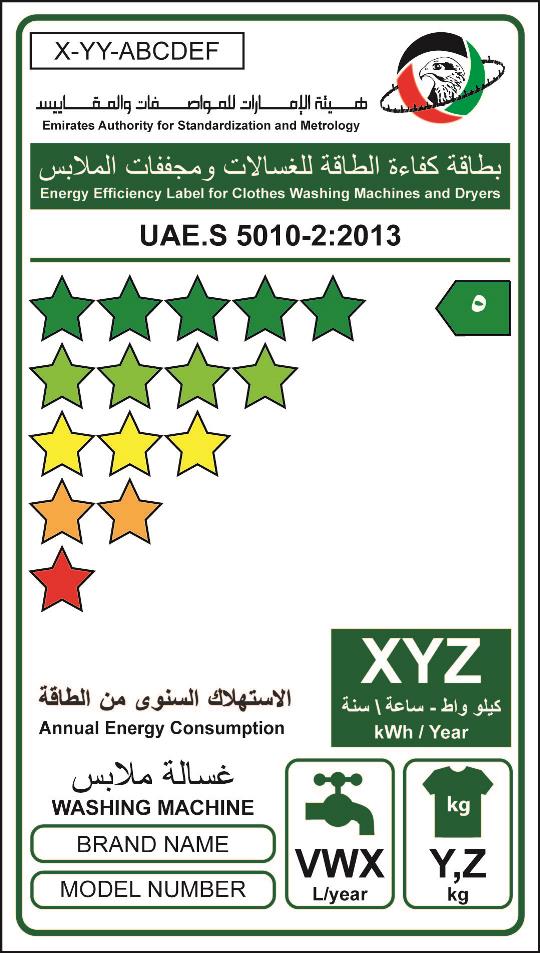In today’s high-tech world, most homes in Abu Dhabi are filled with electrical appliances that make life easier and more comfortable. It’s a matter of habit to switch on the kettle, load the dishwasher or take chilled food from the fridge. But it’s worthwhile stopping to consider the true impact of the appliances we use, on both our power bills and our environment.
In most homes the main energy eaters are the same: fridges and freezers; washing machines and dishwashers; and water heaters. So, swapping your old power-hungry appliances for newer, energy saving models will seriously cut consumption costs. Of course, replacing them can be very expensive but over time it will save you a lot of money.
To make it easier to compare how different products perform, many new appliances sold in UAE now display an Energy Guide label, which shows typical annual energy consumption. Look out for products showing the Emirates Quality Mark label, as these models exceed the minimum energy efficiency levels set by Emirates Authority for Standardization and Metrology (ESMA). Another logo that tells you it’s an energy-friendly product is the Abu Dhabi Trustmark , which is awarded by Abu Dhabi Quality and Conformity Council.

Think inside the box
In our hot climate most of us rely heavily on refrigeration to keep food fresh. The larger the appliance the more energy it needs to run, so don’t buy a huge fridge or freezer and leave it half empty. However, it’s more efficient to run one large unit rather than two small ones.
Your refrigerator or freezer door needs an airtight seal and you should try not to keep opening and closing the door, especially for long periods of time, as the cold air inside will escape. It’s a good idea to defrost your freezer regularly and keep it as full as possible, so it uses less power to keep things frozen; most new units are fitted with an automatic defrosting facility.
Try to keep your refrigerator out of direct sunlight and away from other heat sources, like your oven. Position it against an outside wall to let heat from the motor escape, but make sure you leave some space around the unit for air to circulate.
All washed up
Whether they contain clothes or dishes, washing machines and dishwashers use a lot of water to gets things clean, and use a lot of electricity to heat it. Some newer models use far less water than older styles, but even so, there are still a few things you can do to reduce the amount of energy and water your machine wastes.
Although using hot water could potentially give you cleaner results, it isn’t always necessary as you can use a cold or a warm wash for most clothes. Putting your washing machine on a cold wash uses much less energy that a warm wash cycle. If your machine has an eco cycle, that’s also a good option. Whatever temperature you use, make sure your machine is full before you switch on, but don’t overload it.
Of course, you need to buy a machine that’s the right size for your needs, or you could waste money running it when it’s half empty.
Beat the heat
Unlike most electrical appliances, water heaters are usually tucked out of sight and only thought about when they need fixing. But, when it’s switched on it’s using electricity and you’re paying the bill. So instead of leaving your water heater on all the time, try turning it on just half an hour before your bath or shower. Alternatively, you can keep costs down by fitting a timer to heat water at set times each day, or overnight so it’s ready for you in the morning.
By taking charge of your water heater’s thermostat you can help to control the energy used. Reducing the temperature by just 2 degrees can use up to 6% less electricity, so setting the control to around 55°C will heat your water up, but keep your bills down.
FIND OUT MORE
